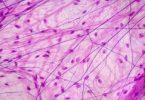Botany Science Quiz Questions:
Founder of ‘‘Taxonomy’’ is
(a) Aristotle
(b) John Ray
(c) Haeckel
(d) Linnaeus
70 S type of ribosomes are found in
(a) Eukaryotic cells
(b) Prokaryotic cells
(c) Both
The term ‘New systematics’ was introduced by
(a) Adolf Engler
(b) Karl prantl
(c) George Bentham
(d) Julian Huxley
Chlorosis in plants occur due to deficiency of
(a) Zn
(b) Ca
(c) Cl
(d) B
A cystolith is a deposit of
(a) Calcium oxalate
(b) Starch
(c) Calcium carbonate
(d) Silica
Related: chemical kinetics answers
The term plasmamembrane was given by
(a) Robertson
(b) Nageli
(c) N. Grew
(d) J.Q. Plowe
The function of the nucleolus is the cell is
(a) Synthesis of protein
(b) Synthesis of DNA
(c) Synthesis of RNA
(d) Synthesis of Ribosomes
Jumping genes were discovered by
(a) Mcclintock and Creighton
(b) Avery, Mcleod and Mccarthy
(c) Hedges and Jacob
(d) Lederberg and Tatum
Polytene chromosomes are formed by the process of
(a) Endomitosis
(b) Budding
(c) Meiosis
(d) Amitosis
Roots which help the horizontal branches of Banyan tree in the air are called
(a) Stilt roots
(b) Thumb roots
(c) Prop roots
Related: alkaline earth metal (Chemistry) Quiz
Chromosomes with secondary constriction which are associated with organisation of nucleoli
(a) Centromere
(b) Satellite chromosomes
(c) Homologous chromosomes
Simplest amino acid is
(a) Glycine
(b) Alamine
(c) Aspartic acid
(d) Leucine
The most important DNA synthesizing enzyme is
(a) Dna polymerase I
(b) DNA polymerase II
(c) DNA polymerase III
(d) Topoisomerase
How many meiotic divisions are necessary for the formation of 100pollen grains
(a) 50
(b) 100
(c) 125
(d) 25
Ribosomes are involved in:
(a) Protein breakdown
(b) Protein synthesis
(c) Energy generation
(d) Cell secretion
Related: anaerobic respiration quiz
Xanthomonas oryzae cause disease in
(a) Coconut
(b) Grape vine
(c) Paddy
(d) Citrus
Stomata participate in :
(a) Transpiration
(b) Pollination
(c) Absorption
(d) Transportation
When the pollen tube enters the ovule in the ovary of a plant through micropylar end, it is known as
(a) Chalazogamy
(b) Mesogamy
(c) Porogamy
(d) Autogamy
Addition of the new cell wall material in the existing one is
(a) Deposition
(b) Apposition
(c) Intussuception
(d) Aggregation
Chloroplasts are present in:
(a) Roots
(b) Green leaves
(c) Dried leaves
(d) Flowers and fruits
Related: Hybridization worksheet with answers
The outermost wall of a plant cell is
(a) Tertiary wall
(b) Middle Lamella
(c) Primary wall
(d) Secondary wall
The stem of dalbargia yields :
(a) oil
(b) timber
(c) fibre
(d) coir
Xanthophyll is
(a) Yellow coloured
(b) Colourless
(c) Green coloured
(d) Red coloured
A cell wall material of bacteria is stained by
(a) Sudan IV
(b) Crystal violet
(c) Safranin
(d) Both (b) and (c)
The core of nucleosome is made up of two molecules of each of
(a) H1, H2A, H2B, H3
(b) H1, H2A, H2B, H4
(c) H1, H2A, H2B, H3, H4
(d) H2A, H2B, H3, H4
Related: biotechnology and its applications mcq with answers
Which of the following RNA is short lived
(a) m-RNA
(b) t-RNA
(c) r-RNA
(d) All of these
Tonoplast enclose
(a) Cytoplasm
(b) Nucleolus
(c) Mitochondria
(d) Vacular sap
Cistron concept of the gene is that
(a) Gene is a unit of function
(b) Gene is a unit of recombination
(c) Gene is a unit of mutation
Ligase enzyme is used for
(a) Joining bits of DNA
(b) Splitting DNA threads into small bits
(c) Dnaturation
Every living cell possesses all of the following except
(a) Cytoplasm
(b) Genetic material
(c) Nucluear numbrane
(d) Cell membrane
Related: Thermodynamics Sample Paper
Which of the following is a fat soluble vtamin –
(a) Vitamin B2
(b) Vitamin D
(c) Vitamin H
(d) Vitamin C
The ATPase enzyme is located in the mitochondria in
(a) Oxysomes
(b) Outer membrane
(c) Inner membrane
(d) Matrix
Cell plate synthesis during cell division of a plant cell occurs by
(a) Golgi complex
(b) Endoplasmic reticulum
(c) Peroxisome
(d) Mitochondria
Chromosome number is halved in which stage of meiosis
(a) Metaphase I
(b) Anaphase I
(c) Metaphase II
(d) Telophase I
When are the chromosome least coiled
(a) Interphase
(b) Metaphase
(c) Anaphase
(d) Telephase
Relaed: application of biot savart law MCQs
In DNA Guanine is 20%. Thymine content
(a) 60%
(b) 20%
(c) 40%
(d) 30%
In Capsella the pollen grains are shed at
(a) 2-celled stage
(b) 3-celled stage
(c) 2-nuclei stage
(d) 3-nuclei stage
Terminal meiosis takes place in
(a) Most animal and some plants
(b) Never occurs in plants
(c) Never occurs in animals
(d) Is a character of prokaryotes
In Passiflora, a weak stemmed plant the tendrils are modifications of
(a) Axillary buds
(b) Terminal leaflet
(c) Stipules
(d) Leaves
Chemically spindle fibres are
(a) Lipids
(b) Tubulin protein
(c) Nucleotides
(d) Actin proteins
Related: Glycolysis pathway quiz
Pneumatophores (breathing roots) are usually present in
(a) Xerophytes
(b) Epiphytes
(c) Mangrove plants (Avicennia)
(d) Hydrophytes
Colchicine is used to induce polyploidy because it
(a) Inhibits meiosis
(b) Kills cells
(c) Inhibits centromere formation
(d) Inhibits spindle formation
Who first isolated the chemical signal responsible for phototropism?
(a) Drawin
(b) Paal
(c) Boysen Jensen
(d) F.W. Went
In endosperms of maize and Pinus, the ploidy levels are
(a) Triploids in both
(b) Triploids in maize and diploid in Pinus
(c) Triploid in maize and haploid in Pinus
(d) Diploid in maize and triploid in Pinus
A major application of embryo culture is in
(a) Production of alkaloids
(b) Overcoming hybridization barriers
(c) Clonal propagation
(d) Induction of somaclonal variation
Related: skeletal system quiz
Why do the newly harvested potato tubers not germinate even when placed in favourable conditions?
(a) Due to dormancy
(b) Due to lack of water absorption
(c) Due to difficulty of light penetration
(d) Due to the lack of photosynthetic apparatus
Closure of the flower and drooping of the bud of poppy are examples of
(a) Hyponsty and epinasty
(b) Epinasty and hyponasty
(c) Hyponasty only
(d) Epinasty only
Which of the following technique is employed for the separation and identification of phytohormones?
(a) Polarizing microscopy
(b) Autoradiography
(c) Gas chromatography
(d) Cell fractionation
Phytotron is a device by which
(a) Electrons are bormbarded
(b) Plants are grown in controlled environment
(c) Protons are librated
(d) Mutations are produced in plant
In pisum sativum, gene responsible for stem height and pod colour, show
(a) Linkage
(b) No linkage normally
(c) Linkage in 50 % case
Related: calorimetry problems
Which of the following is the primary electron acceptor of Pigment system I of photosynthetic organization?
(a) Plastoquinone
(b) Plastocyanin
(c) Ferredoxin
(d) Cytochromes
The plant body of Funaria is
(a) Different into ahizoids, short axis and leaves
(b) Different into root, axis and leaves
(c) Simple rosette thallus
What are violet-purple coloured structures present on the under side of Riccia thallus?
(a) Rhizoids
(b) Scales
(c) Adeventitious buds
(d) Archegonia
In Riccia
(a) Sporophyte remains parasitic over its gametophyte
(b) Gametophyte is parasitic over its sporophyte
(c) Sporophyte is a partial parasite
(d) Sporophyte is independent of the gametophyte
Rhizopus culture raised from a single spore often fails to produce zygospores because of
(a) Deficiency of Oxygen
(b) Absent of (+) and (–) strains of hyphae
(c) Poor growth of hyphae
(d) Deficiency of nutrients
Related: refraction of spherical lenses quiz
The formation of gametophyte like structure from a sporophyte without spore formation is known as
(a) Parthenogensis
(b) Azygospory
(c) Apospory
(d) Apogamy
Which of the following covers sporangia in ferns
(a) Strobilus
(b) Cone
(c) Indusium
(d) Ligule
Which of the following is not involved in the fertilization of ferns
(a) Pollen tube
(b) Water
(c) Archegonia
(d) Falgellated sperms
Which combination of characteristics is correct for a fern sporangium?
(a) Sessile, unicellular, jacketed
(b) Stalked, unicellular, non-jacketed
(c) Sessile, multicellular, non-jacketed
(d) Stalked, multicellular, jacketed
What is developed by the germination of spores in Pteridium
(a) Protonema
(b) Prothallus
(c) Adult plant
(d) Sporophyte
Related: respiratory system quiz
Most of Gymnosperms differ from most of Angiosperms
(a) In having naked ovules
(b) In having seeds
(c) In being smaller in system showing heterospory
Of the following the false character with respect of Pinus is
(a) Bracts and ovuliferous scales
(b) Embryo with two cotyledons
(c) Resin canals in needles
(d) Tracheids with bordered pits
Which of the following is a Gymnosperm with vessels?
(a) Pinus
(b) Gnetum
(c) Taxus
(d) Cycas
Male gametophyte of Gymnosprms differ from angiosperms in having
(a) No prothallial cells
(b) One male gamete
(c) One tube nucleus
(d) One or more prothallial cells
Lichens can not grow where there is
(a) Climate not humid
(b) Atmospheric pollution
(c) No calcareous soil
(d) Extreme drought
Related: yeast mcq
Lichens can not grow where there is
(a) Climate not humid
(b) Atmospheric pollution
(c) No calcareous soil
(d) Extreme drought
The fungal part of Lichens generally belongs to the class
(a) Phycomycetes
(b) Ascomycetes
(c) Fungi imperfecti
(d) Basidiomycetes
What type of spore cells are in Bryophytes?
(a) Triploid in nature
(b) Tetrapolid in nature
(c) Haploid in nature
(d) Diploid in nature






